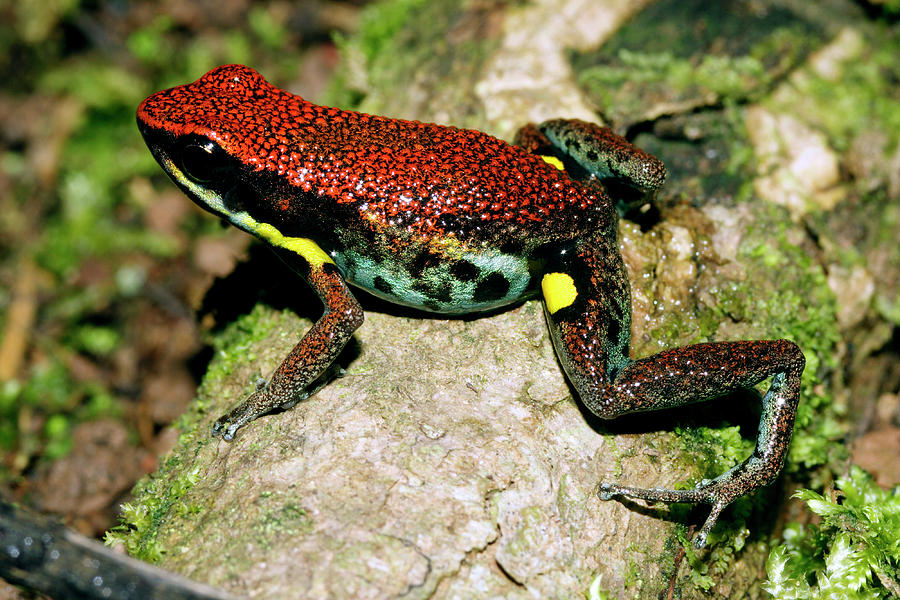



Being so small would lead you to believe that visual sexing would be more difficult. They are so called due to their diminutive adult size, with many species not exceeding the size of a thumbnail. Thumbnail Dart Frogs are in the genus Ranitomeya. In my experience, these frogs typically do not develop the ‘pear shape’ evident in many females of other species. If the frogs are overweight (a common occurrence in the hobby), it may be much more difficult to distinguish between the two sexes. This can be obvious in some frogs, and much more subtle in others. Girth: Sexually mature females will generally appear wider than males. Females also have a more robust, rotund appearance. Not only are females larger, but they tend to have a wider head, as well. This assumes that feeding, housing, and age are similar. Size: As a general rule, female frogs will be larger than their male counterparts. Having a group of individuals to compare to will greatly aid you in your ability to properly sex the animals. After the animals are sufficiently old enough (typically 1-2 years), it’s possible to make an educated guess on sex based on body shape and size. It can be fairly difficult to sex many of the species in these genus, and often times your best bet is to wait for calling or egg laying. This group includes many popular hobby frogs, such as Phyllobates terribilis, P. If the frogs are overweight (a common occurrence in the hobby), it may be more difficult to distinguish between the two sexes. Girth: Mature, breeding females generally appear pear shaped because they are carrying eggs. This assumes that feeding, housing, and age are similar.ĭendrobates auratus ‘Costa Rican Green and Black’ Trucs tend to be pretty difficult to visually sex, regardless of age. The older the frogs are, the more apparent their sex – by 2 or 3 years, the differences are often very obvious at first glance. Generally, by 8-10 months, an experienced keeper can make an educated guess. However, sexing them is often more difficult. truncatusĪuratus, Leucs, and Truncs are all considered part of the “Tinctorius Group”, and are very closely related to Dendrobates tinctorius. Take note that many frogs in the hobby are obese, which can negate this general rule. This is much more visible in some females than others. Girth: Mature, breeding female Dendrobates tinctorius generally appear swollen or full, because they are carrying eggs. Size: As a general rule, female Tincs will be larger than their male counterparts. This characteristic is best used when comparing multiple animals to each other, and the frogs are in a relaxed state. This rule is not steadfast, but is more correct than not among Tincs.īack Arch: As seen in the picture below, Female Tincs tend to have a higher back arch than males when both are viewed side by side. Toe pads: Male Dendrobates tinctorius tend to have larger, heart shaped toe pads on their front feet. There are 4 general characteristics that will aid you in sexing Tincs. With most locales in the trade, an educated guess about sex can be made at 8-10 months of age. They typically mature at around 12-18 months of age. Sure, we all know males call and females lay eggs, but how can you tell who is who just by looking at them? The following hints and tips are meant to help you in establishing the sex of your anuran pets.ĭendrobates tinctorius, known as ‘Tincs’ in the trade, are a very common beginner frog. Dart frogs, like many frogs, can be difficult to sex based on outward appearance.


 0 kommentar(er)
0 kommentar(er)
